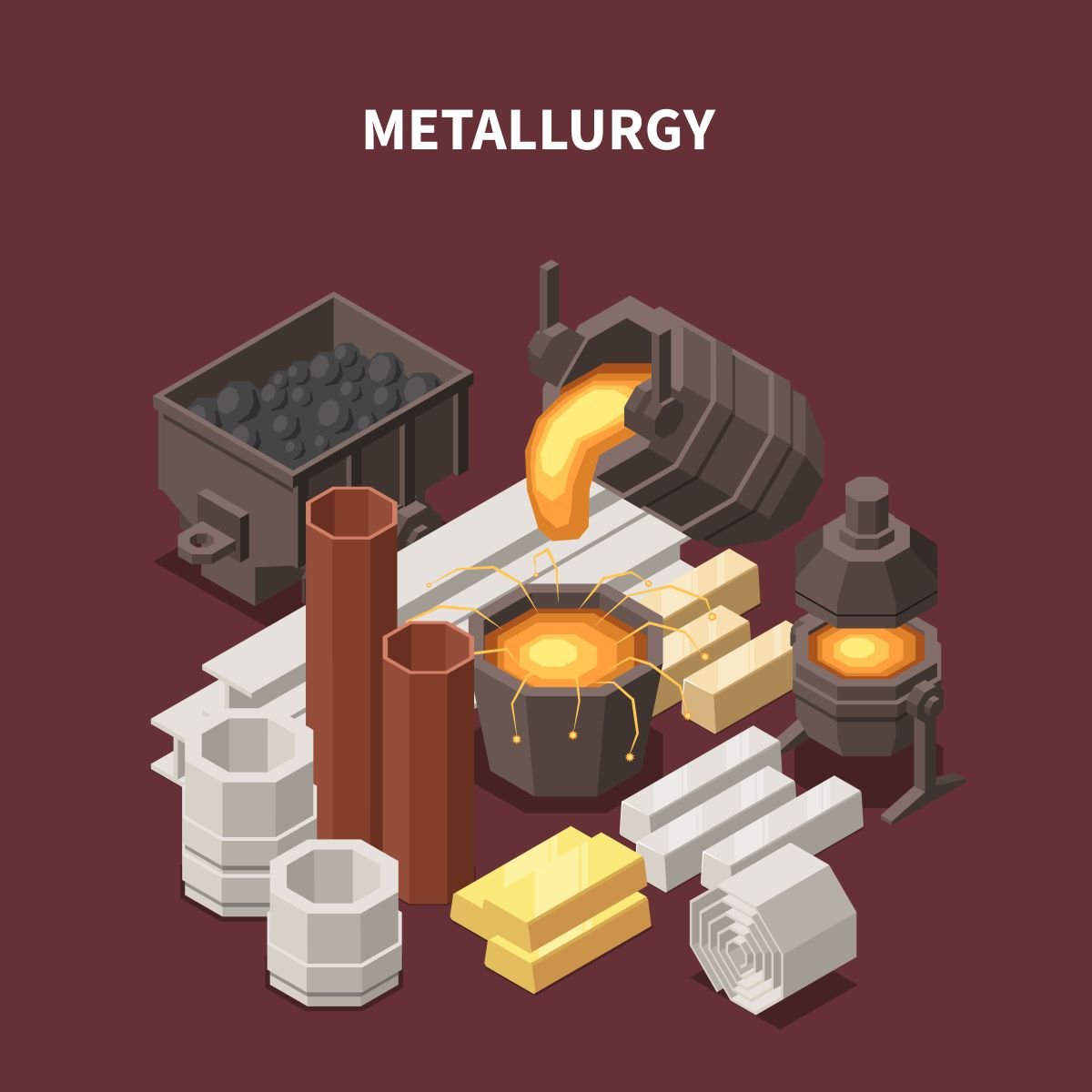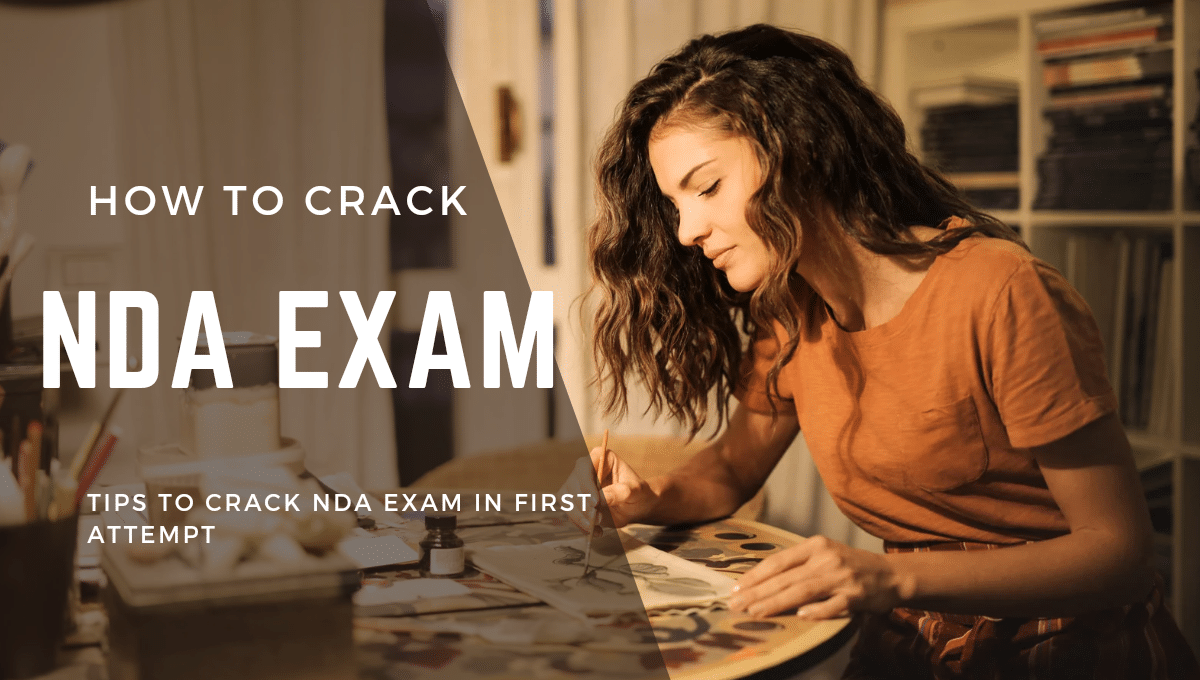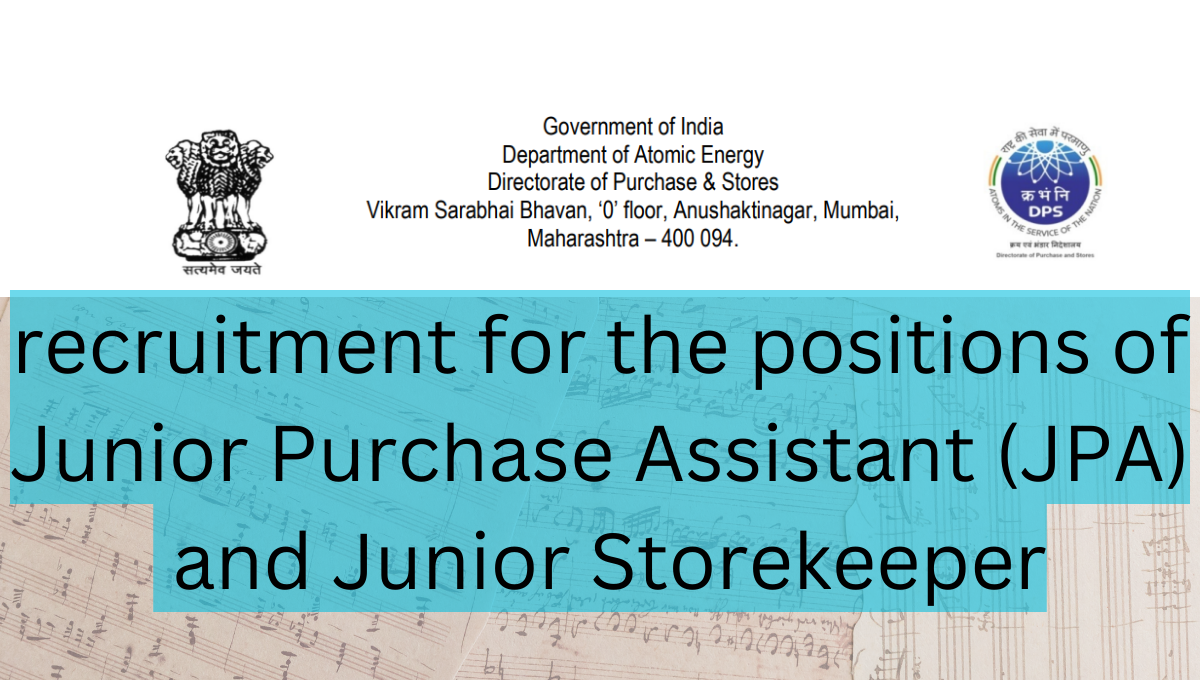Metals and Non-Metals: Important 25 Questions with Solutions are two essential groups of elements that form the basis of everything around us. From the shiny iron railing in your home to the oxygen you breathe, these elements play vital roles in daily life. Understanding their properties enables us to utilise them effectively in science, technology, and industry. Before diving into it, let’s get into the basics of this important chapter, “metals and non-metals.
Metals and Non-Metals: Understanding the Basics
Metals and Non-Metals : Outline
- Introduction
- What are metals and non-metals?
- Importance of studying them
- Physical Properties of Metals
- Appearance, malleability, ductility, conductivity
- Physical Properties of Non-Metals
- Brittle nature, poor conductivity, and appearance
- Chemical Properties of Metals
- Reaction with oxygen, water, and acids
- Chemical Properties of Non-Metals
- Reaction with oxygen, water, and acids
- Uses of Metals
- Common examples and their applications
- Uses of Non-Metals
- Everyday importance in life and industries
- Metalloids – The Bridge Elements
- Meaning and examples (e.g., silicon, boron)
- Difference Between Metals and Non-Metals
- Comparison in a simple format
- Occurrence of Metals and Non-Metals
- Natural sources and extraction
- Alloys and Their Importance
- Mixtures of metals and their applications
- Environmental Impact
- Corrosion, pollution, and recycling
- Fun Facts About Metals and Non-Metals
- Interesting trivia
- Real-Life Applications
- Technology, medicine, and construction
- Conclusion and FAQs
- Summary and five important FAQs

Metals and Non-Metals: Physical Properties of Metals
Metals are known for their shiny and lustrous appearance. They are generally solid at room temperature (except mercury) and are both malleable and ductile — meaning they can be hammered into thin sheets or drawn into wires. Metals are also excellent conductors of heat and electricity, making them perfect for wires, cooking utensils, and electrical appliances.
Physical Properties of Non-Metals
Non-metals are completely different in nature. They are usually dull, brittle (if solid), and poor conductors of heat and electricity. For example, sulfur and phosphorus crumble easily when pressed. Non-metals like oxygen and nitrogen exist as gases, showing their diversity in physical forms.
When metals react with oxygen, they form metallic oxides — for example, magnesium reacts with oxygen to form magnesium oxide. Most metals also react with acids to produce hydrogen gas, which is why you see bubbles when zinc reacts with dilute hydrochloric acid. Metals such as sodium and potassium even react vigorously with water, forming alkalis.
Chemical Properties of Non-Metals
Non-metals react with oxygen to form non-metallic oxides that are usually acidic in nature, like carbon dioxide or sulfur dioxide. They generally do not react with acids but can react with bases under certain conditions. Non-metals such as chlorine and oxygen are highly reactive and play crucial roles in various chemical reactions.
Uses of Metals
Metals are everywhere — in vehicles, buildings, machines, and even in our bodies. Iron is used in construction, copper in electrical wiring, and aluminum in making lightweight materials like aircraft bodies. Gold and silver are used in jewelry, while zinc is essential for galvanizing iron to prevent rusting.
Non-metals are equally important. Oxygen supports breathing, carbon is the backbone of organic life, and sulfur is used in making fertilizers. Iodine helps in maintaining thyroid health, and chlorine is widely used in water purification.
Metalloids – The Bridge Elements
Between metals and non-metals lies a small group called metalloids. These elements, like silicon, boron, and arsenic, show properties of both metals and non-metals. Silicon, for instance, conducts electricity partially and is widely used in computer chips and solar panels.
Difference Between Metals and Non-Metals
| Property | Metals | Non-Metals |
| Appearance | Shiny and lustrous | Dull and non-lustrous |
| Conductivity | Good conductors | Poor conductors |
| Malleability | Can be hammered | Brittle |
| State | Mostly solid | Solid, liquid, or gas |
| Reaction with acids | Produces hydrogen gas | Usually no reaction |
Occurrence of Metals and Non-Metals
Metals are mostly found in the earth’s crust in the form of ores such as bauxite (for aluminum) and hematite (for iron). Non-metals, on the other hand, are often found in the atmosphere (like nitrogen and oxygen) or in minerals (like sulfur and phosphorus).
Alloys and Their Importance
Alloys are mixtures of two or more metals (or a metal with a non-metal) that improve strength and durability. For example, brass is made of copper and zinc, while bronze is made of copper and tin. Stainless steel, an alloy of iron, carbon, and chromium, resists rust and is used in cutlery and machinery.
Environmental Impact
While metals help us build modern infrastructure, their extraction and corrosion can harm the environment. Recycling metals can help reduce pollution and conserve resources. Non-metals like carbon dioxide contribute to the greenhouse effect, making it essential to balance their use.
Fun Facts About Metals and Non-Metals
- Mercury is the only metal that is liquid at room temperature.
- Gold is so malleable that one gram can be beaten into a sheet one square meter in size.
- Diamond, a form of carbon (non-metal), is the hardest natural substance on Earth.
- Sodium and potassium react violently with water.
- Helium is lighter than air and used in balloons.
Real-Life Applications
Metals and non-metals together shape modern life. From the wires that power your home to the air you breathe and the water you drink, their combined presence ensures survival and progress. In technology, metals like copper and silicon dominate electronics, while non-metals like carbon and oxygen sustain life processes.
Conclusion
Metals and non-metals form the foundation of chemistry and the world around us. While metals give us strength and utility, non-metals bring diversity and life. Understanding their properties and uses helps us appreciate the balance of nature and technology in every object we encounter.
FAQs
1. What are the main differences between metals and non-metals?
Metals are shiny, malleable, and good conductors, while non-metals are dull, brittle, and poor conductors.
2. Which metal is liquid at room temperature?
Mercury is the only metal that exists as a liquid at room temperature.
3. What are metalloids?
Metalloids are elements that show properties of both metals and non-metals, like silicon and boron.
4. Why are alloys important?
Alloys enhance the properties of metals, making them stronger, more durable, and resistant to rust.
5. How do metals and non-metals impact the environment?
Metal mining causes pollution, while some non-metals like CO₂ affect climate; recycling and controlled use help reduce these effects.
Here are 25 moderate-level questions with answers on the topic of “Metals and Non-Metals ” for Class X students:
Questions and Answers
- Q: What is the difference between a metal and a non-metal in terms of electrical conductivity?
A: Metals are generally good conductors of electricity due to the presence of free electrons, while non-metals are poor conductors as they lack free electrons. - Q: Give two examples of metals that do not corrode easily.
A: Gold and platinum do not corrode easily. - Q: Why are metals malleable and ductile, whereas non-metals are not?
A: Metals have layers of atoms that can slide over each other without breaking bonds, making them malleable and ductile. Non-metals lack this arrangement, making them brittle. - Q: Name one metal and one non-metal which are liquid at room temperature.
A: Metal – Mercury (Hg); Non-metal – Bromine (Br). - Q: Explain why sodium and potassium are stored in kerosene.
A: Sodium and potassium are highly reactive and can react vigorously with air and moisture; storing them in kerosene prevents these reactions. - Q: Write the chemical equation for the reaction of magnesium with water.
A: (when reacted with hot water). - Q: What is an amphoteric oxide? Give an example.
A: An amphoteric oxide reacts with both acids and bases to form salt and water. Example: Aluminium oxide (). - Q: Why does copper not react with dilute hydrochloric acid?
A: Copper is less reactive than hydrogen, so it cannot displace hydrogen from dilute hydrochloric acid. - Q: Name one metal and one non-metal used in the purification of water.
A: Metal – Aluminium (used as a coagulant); Non-metal – Chlorine (used for disinfection). - Q: Describe the reaction of calcium with water.
A: Calcium reacts with water to form calcium hydroxide and hydrogen gas.
. - Q: What is the difference between a mineral and an ore?
A: A mineral is a naturally occurring substance with a definite chemical composition. An ore contains enough metal in it to be profitably extracted. - Q: Why is aluminium used for making electrical cables?
A: Aluminium is used because it is a good conductor of electricity, lightweight, and relatively cheap. - Q: What happens when a metal carbonate reacts with an acid?
A: It forms a salt, water, and carbon dioxide.
Example:
. - Q: Write two chemical properties of non-metals.
A: (1) Non-metals form acidic or neutral oxides.
(2) They gain electrons to form negative ions (anions). - Q: Explain why metals are used for making cooking utensils.
A: Metals are good conductors of heat and have high melting points, making them suitable for cooking. - Q: How does zinc react with dilute sulphuric acid?
A: Zinc reacts with dilute sulphuric acid to produce zinc sulphate and hydrogen gas.
. - Q: What is alloying? Why is it done?
A: Alloying is the process of mixing a metal with other metals or non-metals to enhance its properties, such as strength, corrosion resistance, and hardness. - Q: Why are non-metals not used for making wires?
A: Non-metals are poor conductors of electricity and are brittle, making them unsuitable for wiring. - Q: What happens when iron nails are placed in copper sulphate solution?
A: Iron displaces copper from copper sulphate solution, forming iron sulphate and copper deposits.
. - Q: Give one use each of chlorine and sulphur.
A: Chlorine – Used for water purification; Sulphur – Used in the manufacture of sulphuric acid. - Q: Define corrosion. Give one method to prevent it.
A: Corrosion is the gradual degradation of metals due to chemical reactions with their environment. It can be prevented by painting or coating the metal. - Q: What happens when aluminium reacts with dilute hydrochloric acid?
A: It forms aluminium chloride and hydrogen gas.
. - Q: Why is hydrogen gas not evolved when a metal reacts with nitric acid?
A: Nitric acid is a strong oxidizing agent and it oxidizes hydrogen to water instead of letting it evolve as gas. - Q: Explain the term ‘electrolytic refining’ with an example.
A: Electrolytic refining is the process of purifying a metal using electrolysis. Example: Copper is refined by making it the anode and a pure copper strip as the cathode in an electrolyte of copper sulphate. - Q: What are metalloids? Give two examples.
A: Metalloids have properties of both metals and non-metals. Examples: Silicon (Si), Germanium (Ge). - Here are 15 difficult-level questions and answers on the topic of “Metals and Non-Metals” for Class X students:
Questions and Answers
1. Q: Describe the thermite reaction and mention its applications.
A: The thermite reaction is a highly exothermic reaction in which aluminium powder reacts with iron(III) oxide to produce molten iron and aluminium oxide.
Reaction:
It is used in welding railway tracks and in repairing cracked machinery parts.
2. Q: Explain why an aqueous solution of sodium chloride conducts electricity, but solid sodium chloride does not.
A: In solid sodium chloride, ions are held tightly in a lattice structure, so they cannot move freely. However, in an aqueous solution, the ions are free to move, allowing for electrical conductivity.
3. Q: Why is aluminium oxide considered an amphoteric oxide? Illustrate with balanced chemical equations.
A: Aluminium oxide reacts with both acids and bases, exhibiting amphoteric behavior.
Reaction with acid (HCl):
Reaction with base (NaOH):
.
4. Q: Explain the mechanism of corrosion of iron in the presence of water and oxygen.
A: Corrosion of iron occurs through the following process:
Iron reacts with oxygen and water to form hydrated iron(III) oxide (rust).
Anodic Reaction:
Cathodic Reaction: .
The Fe^^{2+} ions are oxidised further in the presence of water and oxygen to form rust.
5. Q: Give reasons why metals form basic oxides while non-metals form acidic oxides.
A: Metals lose electrons to form positive ions and form basic oxides which react with acids to form salts and water. Non-metals gain electrons to form negative ions and form acidic oxides which react with bases to form salts and water.
6. Q: Differentiate between roasting and calcination processes used in metallurgy.
A: Roasting is the process of heating an ore in the presence of oxygen, typically for sulphide ores (e.g., ). Calcination is heating an ore in the absence of oxygen, typically for carbonate ores (e.g., ).
7. Q: What is the role of flux in the extraction of metals? Give an example.
A: Flux is used in metallurgy to remove impurities by forming a slag. Example: In iron extraction, limestone acts as a flux to remove silica impurities by forming calcium silicate (slag).
8. Q: Why is zinc more reactive than iron, but iron is preferred for galvanization?
A: Zinc is more reactive and forms a protective layer of zinc oxide that prevents further corrosion. Iron is preferred for galvanization because the layer of zinc provides a sacrificial coating, corroding before the iron.
9. Q: How does the reactivity series help in predicting the outcomes of displacement reactions?
A: The reactivity series ranks metals based on their reactivity. A more reactive metal displaces a less reactive metal from its compound. For example, zinc displaces copper from copper sulphate solution, but copper cannot displace zinc from zinc sulphate solution.
10. Q: Explain why alloys are harder than pure metals.
A: In alloys, atoms of different sizes are mixed, which distorts the regular arrangement of the atoms in pure metals, making it more difficult for the layers to slide over each other, increasing hardness.
11. Q: Describe the reaction of chlorine with cold and hot concentrated sodium hydroxide.
A: Reaction of Chlorine with Sodium Hydroxide (NaOH):
1. With Cold Dilute NaOH (below 40°C):
Chlorine reacts with cold, dilute NaOH to form sodium chloride (NaCl), sodium hypochlorite (NaOCl), and water (H₂O).
Equation:
Cl₂ + 2NaOH → NaCl + NaOCl + H₂O
This is a disproportionation reaction where chlorine is both oxidised and reduced.
Use: Sodium hypochlorite is used in bleaching and disinfectants.
2. With Hot Concentrated NaOH (above 80°C):
Chlorine reacts with hot, concentrated NaOH to form sodium chloride (NaCl), sodium chlorate (NaClO₃), and water (H₂O).
Equation:
3Cl₂ + 6NaOH → 5NaCl + NaClO₃ + 3H₂O
This is also a disproportionation reaction but forms sodium chlorate, an oxidising agent used in herbicides and explosives.
.
12. Q: Why is tungsten used for making the filament of electric bulbs?
A: Tungsten has a high melting point (~3422°C) and good electrical conductivity, making it suitable for withstanding high temperatures in electric bulbs without melting.
13. Q: Explain why noble gases are not considered metals or non-metals.
A: Noble gases are inert and do not exhibit typical metallic or non-metallic properties due to their complete valence electron shells, making them chemically unreactive.
14. Q: What is galvanic corrosion, and how can it be prevented?
A: Galvanic corrosion occurs when two different metals are electrically connected in an electrolyte, causing the more reactive metal to corrode. It can be prevented by using insulating materials, coatings, or sacrificial anodes.
15. Q: Describe the process of electroplating and mention its uses.
A: Electroplating involves depositing a layer of metal onto another material using an electric current. For example, coating iron with chromium for a decorative finish and corrosion resistance. It is widely used in jewelry, automotive parts, and household utensils.
The difference between minerals and ores lies in their usability and economic importance:
Difference between minerals and ores
Difference between minerals and ores lies in their usability and economic importance:
Minerals:
Definition: Minerals are naturally occurring, inorganic substances with a definite chemical composition and crystal structure.
Composition: Made of elements or compounds found in the Earth’s crust.
Use: Not all minerals are economically valuable. Some are used directly (like quartz for glassmaking), while others are not commercially viable.
Examples: Quartz, feldspar, mica.
Ores:
Definition: “Ores are minerals that contain a high concentration of a specific metal or valuable material and can be economically extracted.“
Composition: “A subset of minerals that are profitable to mine due to their high content of useful elements.“
Use: “Used to extract metals like iron, copper, gold, and aluminum.”
Examples: Hematite (iron ore), Bauxite (Al2O3) (aluminium ore), Chalcopyrite (copper ore).(𝐶𝑢𝐹𝑒𝑆2)
Key Difference:
- All ores are minerals, but not all minerals are ores.
- Minerals become ores when they have a sufficient concentration of valuable elements to make their extraction economically viable.









I truly enjoy reading on this web site, it has fantastic content. “A short saying oft contains much wisdom.” by Sophocles.
We are a group of volunteers and opening a new scheme in our community. Your website provided us with valuable information to work on. You have done a formidable job and our whole community will be grateful to you.
I will immediately clutch your rss feed as I can’t to find your e-mail subscription link or e-newsletter service. Do you’ve any? Kindly permit me recognize so that I may subscribe. Thanks.
I truly appreciate this post. I have been looking everywhere for this! Thank goodness I found it on Bing. You’ve made my day! Thank you again
Hey very nice web site!! Man .. Beautiful .. Superb .. I will bookmark your website and take the feeds additionallyKI’m happy to seek out numerous helpful info here within the submit, we’d like work out more strategies on this regard, thanks for sharing. . . . . .
Greetings from Florida! I’m bored to tears at work so I decided to check out your site on my iphone during lunch break. I enjoy the info you present here and can’t wait to take a look when I get home. I’m amazed at how quick your blog loaded on my phone .. I’m not even using WIFI, just 3G .. Anyhow, amazing blog!
It is perfect time to make a few plans for the longer term and it is time to be happy. I have learn this put up and if I could I wish to counsel you some fascinating things or suggestions. Maybe you can write subsequent articles relating to this article. I wish to read even more issues about it!
Pretty great post. I simply stumbled upon your weblog and wanted to say that I have truly loved browsing your weblog posts. In any case I will be subscribing on your rss feed and I’m hoping you write once more soon!
I am now not positive the place you’re getting your information, however good topic. I must spend a while finding out more or figuring out more. Thanks for magnificent information I was in search of this information for my mission.
Aw, this was a really nice post. In idea I want to put in writing like this moreover – taking time and actual effort to make an excellent article… however what can I say… I procrastinate alot and in no way appear to get something done.
Wonderful web site. Lots of helpful information here. I?¦m sending it to a few pals ans additionally sharing in delicious. And obviously, thanks to your sweat!
This website is my inhalation, really excellent style and perfect content.
Magnificent goods from you, man. I’ve understand your stuff previous to and you are just too wonderful. I really like what you’ve acquired here, really like what you’re stating and the way in which you say it. You make it entertaining and you still take care of to keep it smart. I cant wait to read much more from you. This is actually a terrific website.
What i do not realize is in reality how you’re no longer really much more smartly-favored than you may be right now. You’re very intelligent. You understand thus significantly with regards to this topic, produced me individually imagine it from numerous varied angles. Its like men and women aren’t involved unless it?¦s one thing to do with Woman gaga! Your own stuffs great. Always care for it up!
Woh I love your posts, saved to my bookmarks! .
Hello my family member! I wish to say that this article is awesome, great written and come with almost all vital infos. I?¦d like to peer more posts like this .
The very crux of your writing whilst sounding agreeable originally, did not really work perfectly with me personally after some time. Someplace throughout the sentences you managed to make me a believer unfortunately only for a short while. I nevertheless have got a problem with your leaps in assumptions and you would do well to help fill in those breaks. If you actually can accomplish that, I could definitely end up being amazed.
Really nice design and style and fantastic content, hardly anything else we require : D.
Hey very nice web site!! Man .. Excellent .. Amazing .. I’ll bookmark your site and take the feeds also…I am happy to find so many useful info here in the post, we need develop more techniques in this regard, thanks for sharing. . . . . .
Rattling clean site, thanks for this post.
Thanks a bunch for sharing this with all of us you actually know what you are talking about! Bookmarked. Please also visit my website =). We could have a link exchange arrangement between us!
I have learn several just right stuff here. Definitely worth bookmarking for revisiting. I wonder how a lot effort you set to make this kind of wonderful informative website.
Some genuinely nice stuff on this internet site, I enjoy it.
Regards for helping out, great information.
This blog is definitely rather handy since I’m at the moment creating an internet floral website – although I am only starting out therefore it’s really fairly small, nothing like this site. Can link to a few of the posts here as they are quite. Thanks much. Zoey Olsen
I too believe hence, perfectly indited post! .
Searching for trusted roof installation in Lancaster? Roof Installation Pros provides expert services across all roofing styles. Their experienced team guarantees strong, lasting installations that enhance your home’s protection and market value. Excellent service, always on time and within budget.
Need top-notch roof installation in Lancaster? Roof Installation Pros delivers professional services with a skilled team ready to handle all roof types. Their work is reliable, durable, and adds value to your home—trusted by many for timely and budget-friendly roofing solutions.
For dependable and expert roof installation services in Lancaster, Roof Installation Pros is your go-to choice. They specialize in all roofing types, delivering lasting solutions that safeguard your property and boost its value. Count on them for affordable, high-quality, and on-time service.
Great wordpress blog here.. It’s hard to find quality writing like yours these days. I really appreciate people like you! take care
Im now not positive the place you are getting your information, however great topic. I needs to spend a while studying much more or figuring out more. Thank you for magnificent information I used to be on the lookout for this information for my mission.
Hello, i feel that i noticed you visited my weblog so i got here to “go back the want”.I am attempting to find things to improve my web site!I suppose its ok to use a few of your ideas!!
Usually I don’t learn article on blogs, however I wish to say that this write-up very compelled me to try and do it! Your writing taste has been amazed me. Thank you, quite nice article.
You actually make it appear so easy together with your presentation but I in finding this matter to be actually something which I believe I might never understand. It kind of feels too complicated and very broad for me. I am looking forward to your next post, I will attempt to get the grasp of it!
Thank you for sharing with us, I think this website genuinely stands out : D.
Perfectly pent content material, thanks for selective information.
Hey there! I’m at work surfing around your blog from my new iphone! Just wanted to say I love reading your blog and look forward to all your posts! Carry on the fantastic work!
Some genuinely nice and useful information on this website, as well I believe the design and style holds wonderful features.
You have remarked very interesting points! ps decent internet site.
Real great visual appeal on this web site, I’d rate it 10 10.
My brother recommended I might like this website. He was totally right. This post actually made my day. You cann’t imagine simply how much time I had spent for this information! Thanks!
Saved as a favorite, I really like your blog!
You made some nice points there. I did a search on the subject matter and found most guys will approve with your blog.
I¦ll right away take hold of your rss feed as I can not find your email subscription hyperlink or newsletter service. Do you’ve any? Kindly allow me understand in order that I may subscribe. Thanks.
Thank you so much for giving everyone an exceptionally nice chance to read articles and blog posts from here. It can be very pleasurable and as well , jam-packed with fun for me personally and my office friends to visit the blog at the very least thrice in 7 days to read the new issues you have. And of course, I’m usually satisfied with all the extraordinary principles served by you. Selected 4 points in this article are rather the simplest I have ever had.
Do you have any video of that? I’d like to find out some additional information.
Wow, marvelous blog layout! How long have you been blogging for?
you made blogging look easy. The overall look of your website is fantastic, as well as the content!
I am in fact glad to read this web site posts which consists of plenty of helpful data,
thanks for providing these kinds of statistics.
Good day! Do you know if they make any plugins to help with SEO?
I’m trying to get my blog to rank for some targeted keywords but I’m not seeing very good success.
If you know of any please share. Thanks!
This site was… how do I say it? Relevant!! Finally I’ve found something which helped me.
Many thanks!
Fantastic beat ! I would like to apprentice while you amend your site, how could i
subscribe for a blog website? The account aided me a acceptable deal.
I had been tiny bit acquainted of this your broadcast provided bright clear idea
My family every time say that I am wasting my time here at net, but I
know I am getting familiarity every day by reading thes fastidious articles.
If some one desires expert view about blogging and
site-building then i propose him/her to go to see this website, Keep up the pleasant work.
It’s actually a nice and helpful piece of info.
I’m happy that you shared this helpful info with us.
Please keep us up to date like this. Thanks for
sharing.
Heya i am for the first time here. I found this board and
I find It really useful & it helped me out a lot. I hope to give something back and
aid others like you helped me.
I like what you guys tend to be up too. Such clever work and exposure!
Keep up the terrific works guys I’ve you guys to my own blogroll.
I do not even know how I ended up here, but I thought
this post was great. I don’t know who you are but definitely you’re going to a famous blogger if you aren’t already 😉
Cheers!
great post, very informative. I wonder why the opposite
experts of this sector do not realize this. You must continue your writing.
I’m confident, you have a huge readers’ base already!
This internet site is my inspiration , rattling good layout and perfect written content.
Unquestionably believe that which you said. Your favorite reason seemed to be on the net the easiest thing to be aware of. I say to you, I definitely get annoyed while people think about worries that they plainly don’t know about. You managed to hit the nail upon the top and defined out the whole thing without having side effect , people can take a signal. Will probably be back to get more. Thanks
I’ve read several just right stuff here. Definitely value bookmarking for revisiting. I wonder how so much effort you set to make this type of magnificent informative web site.
I visit daily some web sites and information sites
to read articles or reviews, except this weblog offers feature based
articles.
Article writing is also a excitement, if you be acquainted with afterward you can write or else it is complicated to write.
At this time it appears like BlogEngine is the best blogging platform available right now.
(from what I’ve read) Is that what you are using on your blog?
There are actually numerous details like that to take into consideration. That may be a great level to deliver up. I offer the thoughts above as common inspiration however clearly there are questions just like the one you convey up where an important factor will probably be working in honest good faith. I don?t know if finest practices have emerged round issues like that, but I’m sure that your job is clearly identified as a fair game. Each boys and girls feel the impression of just a second’s pleasure, for the remainder of their lives.
My spouse and I stumbled over here different page and thought I should check
things out. I like what I see so i am just following you.
Look forward to checking out your web page again.
Hi there, i read your blog occasionally and i own a similar one and i was just curious if you get a lot of spam responses? If so how do you protect against it, any plugin or anything you can suggest? I get so much lately it’s driving me insane so any support is very much appreciated.
Kayışdağı su kaçak tespiti Etiler’deki evimizdeki su kaçağını hemen tespit ettiler ve onardılar. Profesyonel hizmet. https://sociofans.com/ustaelektrikci
Halkalı su kaçak tespiti Evimde su sızıntısı olduğunu bile fark etmemiştim, hızlıca buldular! https://www.jointcorners.com/ustaelektrikci
su kaçak bulma Hızlı ve kaliteli bir hizmet, tekrar ihtiyaç duyarsam ararım. https://www.justyari.com/1687617504257150_17093
cihazla su kaçak tespiti Su kaçağı sorunumu çözdüler, artık içim rahat. https://social.contadordeinscritos.xyz/ustaelektrikci
İstanbul tesisat su kaçağı tespiti Çatalca su kaçağı tespiti: Çatalca’da su kaçakları için güvenilir çözüm. http://ccrr.ru/ustaelektrikci
İstanbul su kaçağı tamir servisi Su kaçağını kırmadan çözmeleri beni çok memnun etti. https://sharezoom.net/ustaelektrikci
Selimpaşa su kaçak tespiti Yeniköy su kaçağı tespiti: Yeniköy’de su kaçağını modern yöntemlerle tespit ediyoruz. https://mm.gd/ustaelektrikci
Moda su kaçak tespiti Ekibin kullandığı termal kameralar sayesinde kaçağın yerini nokta atışıyla buldular. https://www.vaca-ps.org/ustaelektrikci
Samandıra su kaçak tespiti Bulgurlu su kaçağı tespiti: Bulgurlu’da su kaçağına anında müdahale. https://saopaulofansclub.com/ustaelektrikci
noktasal su kaçak tespiti Maltepe’deki ofisimdeki su kaçağını bulmak hiç kolay değildi ama bu ekip harika çalıştı. https://lifethelife.com/ustaelektrikci
cihazla su kaçak tespiti Beylikdüzü su kaçağı tespiti: Beylikdüzü’nde su sızıntılarında nokta atışı tespit. https://userinterface.us/ustaelektrikci
Your blog is a beacon of light in the often murky waters of online content. Your thoughtful analysis and insightful commentary never fail to leave a lasting impression. Keep up the amazing work!
What i dont understood is in reality how youre now not really a lot more smartlyfavored than you might be now Youre very intelligent You understand therefore significantly in terms of this topic produced me personally believe it from a lot of numerous angles Its like women and men are not interested except it is one thing to accomplish with Woman gaga Your own stuffs outstanding Always care for it up